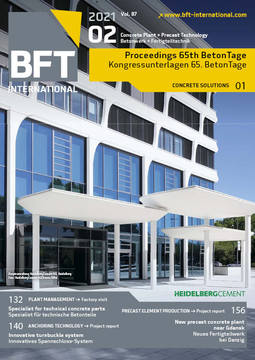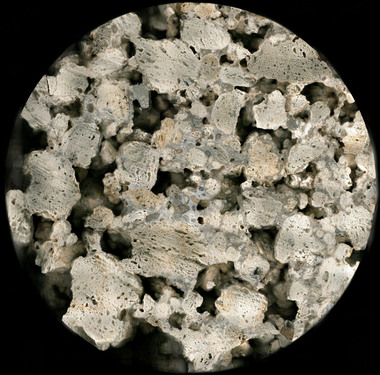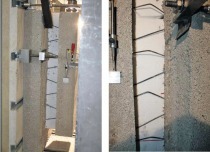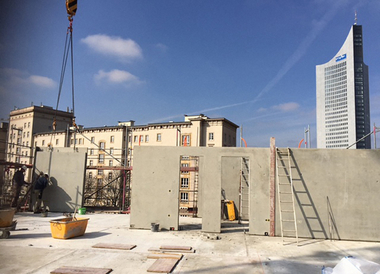Shear resistance of wall elements made of LAC
Lightweight concrete with open structure and lightweight aggregate is increasingly used for the construction of façades due to its excellent thermal insulation properties. Pumice, which occurs naturally, is one of the materials used as lightweight aggregate. In combination with the open structure, the highly porous and extremely lightweight material has an insulating effect so that transmission heat losses via the building envelope can be minimized and the increasingly strict requirements of the Energy Saving Ordinance can be met.
Lightweight aggregate concrete with open structure (LAC) is considered a sustainable and ecological building material not least due to the low water and primary energy requirements during production. LAC can contribute to sustainable construction also due to its recyclability and good carbon footprint.
Findings on the shear resistance were obtained as part of a research project on innovative engineering and design rules for prefabricated wall elements made of LAC funded by the German Federal Ministry for Economic Affairs and Energy (Bundesministerium für Wirtschaft und Energie). The goal was to find an open reinforcement design that does not require closed stirrups and allows production using the rolling method. The structural capacity of the elements was to be ensured at the same time.
The bond and anchorage behavior of reinforcing bars in LAC was analyzed in a first step within the parameters of theoretical and experimental research. Based on the findings obtained, large-scale tests on wall elements made of LAC were designed and performed to assess the shear resistance. Structural elements both with and without shear reinforcement were tested in a three-point bending test.
This paper presents the findings of the project and the design proposal for wall elements made of lightweight aggregate concrete with open structure.








